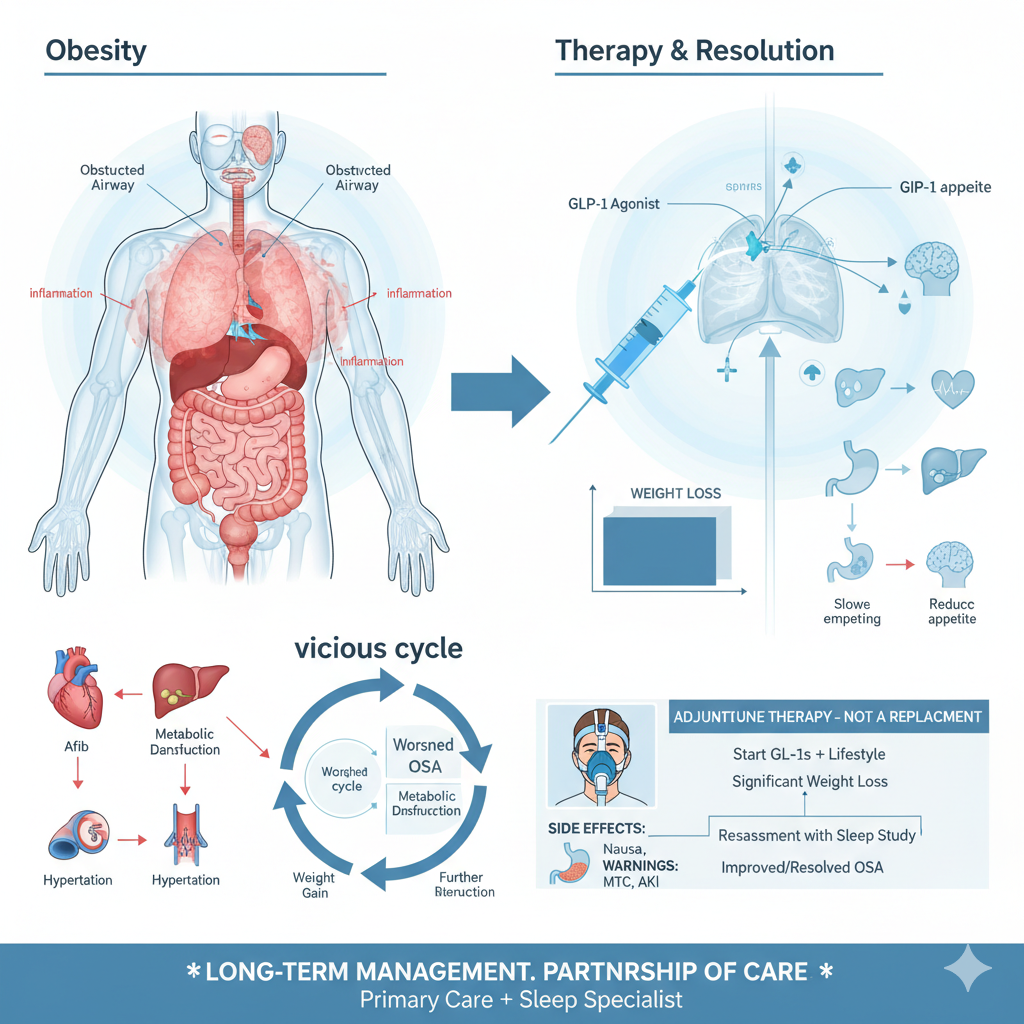
02 Oct Obesity and the use of GLP-1s for Obstructive Sleep Apnoea, a quick review.
Obesity as a Chronic Disease: Obesity is defined as a chronic inflammatory disease involving complex genetic, hormonal, and neurobiological regulation. It is a major, modifiable risk factor for OSA.
Vicious Cycle of Comorbidity: Obesity and OSA are tightly linked, creating a cyclical pathology. A 10% increase in body weight can raise the risk for OSA sixfold. Conversely, untreated OSA exacerbates metabolic dysfunction, leading to further weight gain, insulin resistance, hypertension, and increased risk of cardiovascular diseases, including cardiac arrhythmias (e.g., atrial fibrillation).
Mechanism of GLP-1 Medications: GLP-1 medications (like Semaglutide) induce clinically meaningful weight loss by reducing appetite and caloric intake, slowing gastric emptying, and modulating hunger hormones.
Tirzepatide’s Unique Role: Tirzepatide is highlighted as a dual GIP-1 and GLP-1 receptor agonist, yielding superior weight loss effects. It is currently the only GLP-1-based medication approved for both weight management and the treatment of moderate-to-severe OSA in obese patients.
Adjunctive Therapy and Management: GLP-1s are considered adjunctive therapy for OSA and are not a replacement for established treatments like Continuous Positive Airway Pressure (CPAP) or oral appliances. Ongoing OSA management is essential, and objective resolution of OSA severity must be confirmed through post-weight-loss testing (reassessment).
Safety and Monitoring: Common adverse effects are typically gastrointestinal (nausea, vomiting, diarrhea, constipation). Contraindications for Tirzepatide include a history of medullary thyroid carcinoma (MTC), Multiple Endocrine Neoplasia type 2 (MEN2), severe gastroparesis, or pregnancy. Close monitoring is advised for acute kidney injury (due to dehydration) and for hypoglycaemia/hypotension in patients with diabetes or those on antihypertensive medications.
Long-Term Strategy: GLP-1 medications should be viewed as a long-term or lifelong therapy for chronic risk reduction (akin to statins or beta-blockers), as cessation may result in weight regain in over 50% of patients.
Collaborative Care: Effective care requires collaboration between primary care providers (GPs) (often initiating GLP-1s) and sleep specialists to ensure proper diagnosis, ongoing management, and timely objective reassessment of OSA status.

